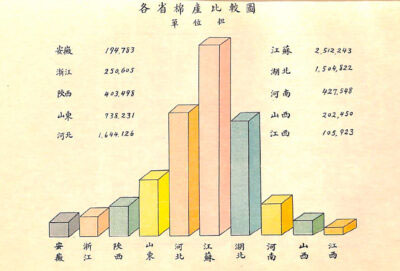
Established in 1921, the Bureau of Economic Information (reorganized as Bureau of Industrial and Commercial Information - Gongshang fangwen ju - in 1928 and Bureau of Foreign Trade – Guoji maoyi ju - in 1931) and its publications (Chinese Economic Bulletin, Journal, and semi-monthly journal Gongshang banyuekan) was a major source of knowledge production on markets and society in general from 1921 to 1937. Although a state-run institution placed under the authority of the Ministry of Industry, the Bureau relied on external experts employed by universities, research institutes, private companies or foreign governments. Its contribution went far beyond producing factual information on economics and markets. Its leading publication, the Chinese Economic Journal indeed covered a wide array of social and scientific concerns, ranging from agricultural development to industrial labor conditions, cost of living, transportation, communication, tourism or cinema. Despite its pioneering role in producing expert knowledge on Chinese society, the history of the Bureau, however, has remained largely unknown to historians of modern China to date. This case study aims to bring this neglected institution to light, unveiling its inner workings, its methods for compiling information, transforming it into data, and eventually communicable knowledge published in its multi-layered and multi-language publications – English weekly bulletin and monthly journal, Chinese bi-weekly, bilingual yearbooks and special pamphlets. By applying advanced techniques in Natural Language Processing (NLP) to the successive layers of publication, we will try to reconstruct the chain of knowledge production. By further applying these techniques to newspapers, we will examine how the Bureau channeled the press in order to selectively disseminate information towards the general public. Our ultimate goal is to illuminate the circulation and popularization of expert knowledge in Chinese society during the Republican period. Drawing on the archives of the Bureau (Archives No.2 in Nanjing), we will also scrutinize its editorial policy, its recruitment strategies and most importantly, identify its actors, not only high-level officials and famous experts but also middle employees and ordinary field workers that made its formidable work of compilation possible for more than fifteen years.